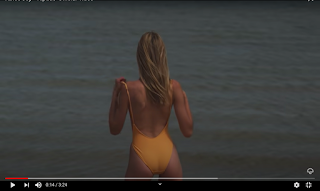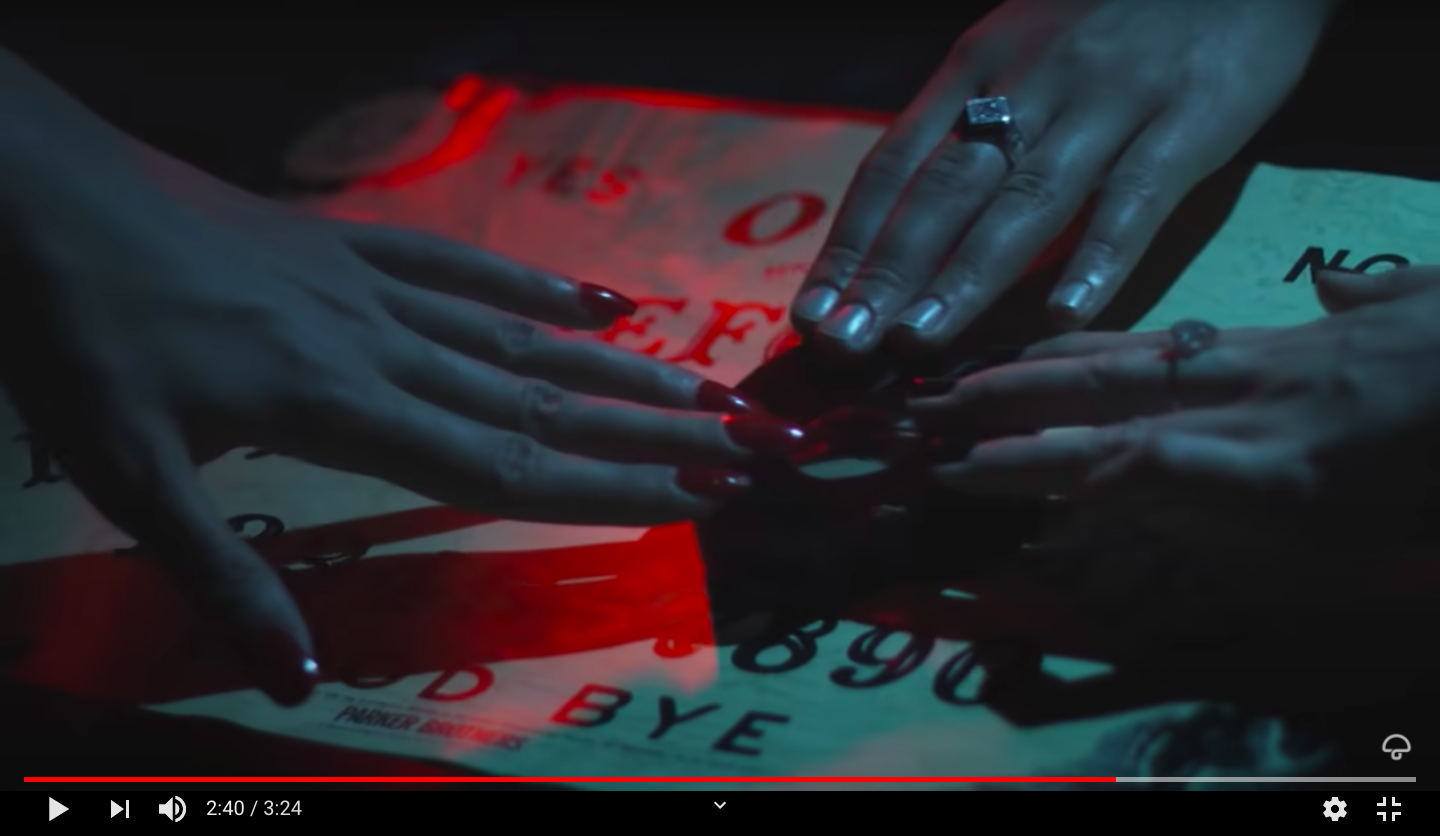Top tip - repetition is an excellent learning technique. Music videos are designed to be watched over and over again, and with their short running time, it makes them excellent candidates for close textual analysis. So make sure you watch these two videos in particular again and again and again...
Context
Formation, lead single for the album Lemonade, was released the day before Beyoncé performed at the Super Bowl final in February 2016. The Formation music video, directed by Melina Matsoukas, was released with the song.
This music video has won numerous awards including a Clio Award for Innovation and Creative Excellence in a Music Video at the 2016 awards, and has been nominated in the music video category at the 59th Grammy Awards.
The video is set against the backdrop of the flooding in New Orleans following Hurricane Katrina and the associated racial tension in America, and also draws historical parallels with references to racism and slavery.
Task - Watch the video again, and make notes under the following questions/headings.
- In what ways are the themes of conflict encoded in this video? What media language is used to show conflict?
-Proairetic code of police car lights, mise-en-scene of costume with 'police' on it- you can't see the persons face only their back removing identity and emphasising it's a force not a person
-beat-matched editing in the opening builds tension
-mise-en-scene of the setting of the flood connotes distress
-aggressive style dancing at the camera
-mise-en-scene of Beyonce wearing complete black with men standing behind her like bodyguards
-the strong lyrics emphasised by Beyonce's singing of them
-shots lasting a long make audience feel uncomfortable and unsettled- editing
-panning shots of women making eye contact with camera- direct mode of address builds conflict
-the 'formations' build a sense of unity within conflict- Beyonce dancing with other women of colour, standing next to men in full black clothes- other men dancing. dancing is a symbolic code for fighting?
-cinematography- the pans and tracking shots have a cinematic effect and build tension and strength
-women wearing the same costumes like they're a uniform for battle
-binary opposition between the 'rich' settings and the poor ones.
-references to historical moments remind the audience of the racial conflicts of the past
-binary opposition between hd footage and vhs style
-
- What are the functions and purposes of this music video? What is it trying to get its audience to do? How do you know?
It's trying to intensify the song and make the audience think about the issues raised.
- What groups are represented in this music video? Are these representations typical or subversive?
black ethnicities- mixed representation in terms of stereotypicalness. common traits are represented, e.g- good at dancing, 'ghetto.' but overall there's a positive representation- powerful- which subverts racist stereotypes common in media.
- Is this a typical music video? How do you know?
Task - using the textual analysis toolkit, analyse how the video to Formation creates meaning for its audience
Rather than simply pointing things out, you must make explicit reference to media language in every single paragraph you write, and explain how it encodes meaning. Codes and conventions – performance/narrative/experimental features
- Camera work (framing – shot types, angle, position, movement)
long, establishing shot of Beyonce on the car in flood- immediately tells the audience something bad has happened, the half-submerged police car and houses function as hermeneutic codes, which position the audience alongside the person saying 'what happened?'- non-digetic sound (this sound also anchors the location of the song as it's an African American speaking in a New Orleans accent). framing makes Beyonce look small which shows that humans and her were a victim and have been rendered powerless. A binary opposition is set up between man-made things and nature with the mise-en-scene of the houses and water.
tracking shot of the neighbourhood positions audience as an onlooker within the neighbourhood, someone in a car going through looking.
none of the shots are still to reflect the movement Beyonce is forming, the message that both onlookers and victims of issues can no longer be still or silent.
lots of wide shots are used to convey power and impact
the camera zooms in slowly a lot to build tension and reflect distress, the audience and characters are positioned with the frame closing in around them- polysemic zoom also conveys power
Close-ups express emotion and gestures (e.g- middle finger)
Wide shots establish mise-en-scene and emphasise conditions created by Katrina
Midshots- establish characters, costume, movement and background details
- Editing – beat-matched?
Opening shots in time with the beat- the sound is unsettling and acts as a siren setting the audience on edge and translating that the shots aren't good- the audience is being shown something that should alert them. Soft and bare tones reminiscent of a serious genre of film.
Binary opposition between the day shots and succession of dark night shots immediately after- sends the audience through a journey from brief light to complete darkness.
Binary opposition set up between the wide shots of the neighbourhood undamaged vs post hurricane
There are no consistent colour tones throughout the music video- there's a balance between cool and warm reflecting different narratives. (e.g- vhs style vs church colours)
- Elements of continuity/montage
- How does the video interpret the music and/or lyrics?
a shot of the paparazzi shows up before Beyonce sings the word.
'i came to slay bitch' 'i got hot sauce in my bag, swag' 'Bamma'
Terms familiar to African Americans, language communicates to a black audience and a mass audience interested in afro-culture.
- Structure/narrative
- Sound
- Mise-en-scene – colour, lighting, location, costume/dress, hair/make-up
natural/motivated lighting in all the shots to reflect this music video is focusing on a real issue and part of the issue is about natural disasters
range of exterior and interior settings and environments (especially in the opening)- church, street, neighbourhood, inside houses, pillars) to convey that a variety of people are affected.
first wide shot of Beyonce in police car- mise-en-scene of setting (Mississippi) is a reference to Katrina
Many visual representations of black-american culture.
The man in the Fez, may allude to New Orleans organisation of cooperatives who serviced loans to Black communities (in the era of Jim Crow where it was unlikely that black people would get a loan from mainstream banks)This is a symbol of black wealth, help and progression.
The director (Melinda Matouskas) edit anchors the above visuals (t= 3:23) with the lyrics "You just might be the next Bill Gates in the making" Alluding to the Microsoft entrepreneur who is well know for his Philanthropy
Beyonce's husband, Jay-z is an entrepreneur who likewise has given his wealth to charity ($1.5 million to #blacklives matter).
The media language infers that Black people have potential to succeed.
The visual references to a minister (mid shot) and Martin Luther King (close-up) are illustrative of the religious roots of African American society.
This is offset by multiple cuts to contemporary social conditions within New Orleans depicting:-
- Gun violence
- Poverty
- Natural disaster (Katrina)
Barthes code: The narrative signifies a representation of African Americans as a resilient but oppressed people overcoming social and political prejudice through faith and the assertion of civil rights.
There are several examples of female objectification throughout the movie supporting Van Zoonen's theory.
The representations also convey additional Narratives associated with African Dance, Creole culture and African fashion/hair. Hall's theory of encoding and decoding applies as audiences will read the text in different ways from their social, cultural perspective. The layers of narrative within the video make the performance engaging and open to interpretation.
late 20th century onwards several artists Madonna, Beyonce/Lady Gaga use the corset to symbolise female empowerment (do you agree?
feminists consider the corset as a symbol of male patriarchy where womens bodies were objectified. Early 20th century






















































